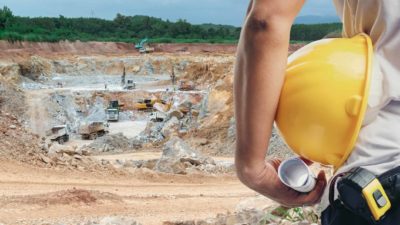The BHP Group Ltd (ASX: BHP) share price is down 9% in February with less than an hour of trading for the month.
That compares to a 2.9% decline in the S&P/ASX 200 Index (ASX: XJO) over the same period.
In late afternoon trade on Tuesday, shares in the ASX 200 mining giant are trading for $44.935 each.
At the closing bell on 31 January, the BHP share price stood at $49.38.
Here's what investors were considering over the course of the month.
What happened in February?
The BHP share price dipped in the first week of February, facing headwinds from retreating iron ore and copper prices.
However, as the price of both industrial metals rebounded, BHP shares stabilised and managed to gain back most of those losses. That was until shares began a steep slide on the back of the ASX 200 miner's half-year earnings results, released last Tuesday.
As we noted prior to the earnings results, "falling short of expectations will likely see the miner's shares fall".
And, as you might have guessed from the tumbling share price, BHP's results indeed came in below market expectations.
According to data quoted by Goldman Sachs, the market was forecasting earnings before interest, taxes, depreciation and amortisation (EBITDA) of US$14.3 billion for the six months ending 31 December (H1 FY23). But BHP reported EBITDA of US$13.2 million, down 28% from H1 FY22 and US$1.1 billion below expectations.
Consensus expectations for net profit after tax (NPAT) were US$7 billion, while that came in at US$6.5 billion. NPAT was down 32% year on year and some $500 million below expectations.
Then there was the interim dividend, which the market had priced in at 98 US cents per share. In reality, BHP declared a fully franked interim dividend of 90 US cents per share. That was down 40% from H1 FY22 and also fell short of expectations.
Commenting on some of the headwinds the ASX 200 miner faced that pressured the BHP share price, CEO Mike Henry said:
Significant wet weather in our coal assets impacted production and unit costs, as did challenges in securing sufficient labour. Inventory movements during the half contributed to costs, including the planned draw-down at Olympic Dam after inventory built up during the smelter refurbishment last year.
However, Henry was upbeat about the months ahead.
"We expect these factors to abate in the second half and for unit costs to fall, in line with revised guidance," he said.
BHP also maintained its full-year production guidance.
BHP share price snapshot
Following February's big drop, the BHP share price is down 3.7% over the past 12 months.
Longer-term, shares in the ASX 200 miner are up 52% over five years.









